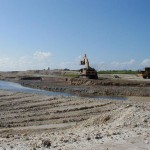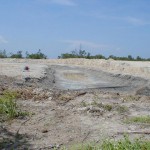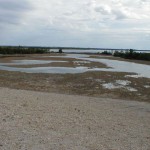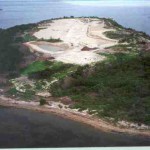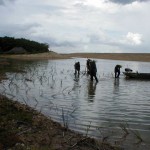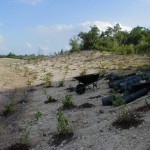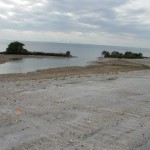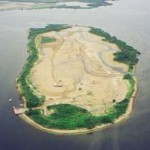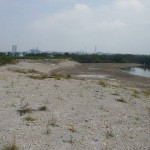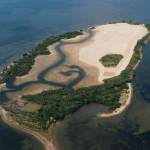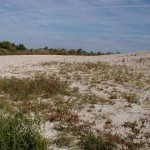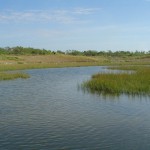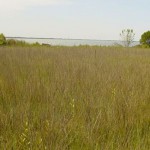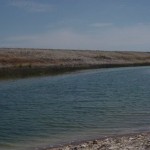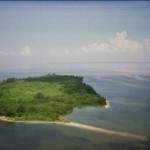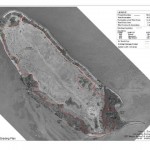Coastal Habitat Restoration
Tampa Bay, Florida
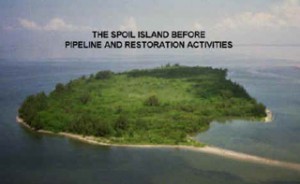
Spoil Island, Pre-Restoration
In 2000, KECE began reviewing and finalizing a conceptual restoration plan for the island which was developed by Lewis Environmental Services, Inc., and the Florida Audubon Society as part of the Port Manatee expansion process. The final plan, developed by KECE, maintained the project goal and overall concepts of the conceptual plan with alterations to the implementation sequence, location of created habitats, and design details for improved incorporation of existing habitats to be restored, to improve overall tidal flushing, and to account for anticipated erosion and shoaling. The restoration was conducted in several phases over a period of 15 months including initial vegetative clearing and grading of the island; initial exotic/nuisance vegetation removal; installation of the gas pipeline; final restoration grading; follow-up exotic/nuisance vegetation maintenance; and restoration plantings.
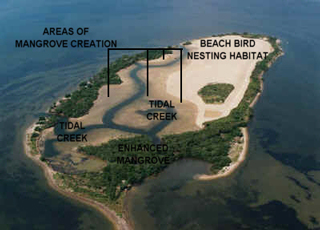
Spoil Island, Post-Restoration
Vegetation monitoring documented the successful enhancement, restoration and creation of approximately 24 acres of coastal wetland habitat, and successful enhancement and/or establishment of the upland habits including beach nesting habitat, coastal strand, and tropical hammock. The spoil island restoration has also successfully provided habitat migratory avian species with over 60 species of birds observed by the National Audubon Society. Of these, eighteen were potentially utilizing the site as nesting habitat.
Services Provided
- Site Assessment
- Vegetation Mapping
- Historic Aerial Photo Interpretation
- Wetland Delineation
- Listed Species Survey
- Topography
- Soils Map
- Seagrass Bed Survey
- Restoration Design
- Manatee Protection Plan
- Environmental Permitting
- Construction Specifications
- Selection of Contractors
- Construction Oversight
Awards Received
Tampa Bay Regional Planning Council’s Future of the Region Award for the Environmental Category (2004)
American Association of Port Authorities Environmental Improvement Award (2004)
